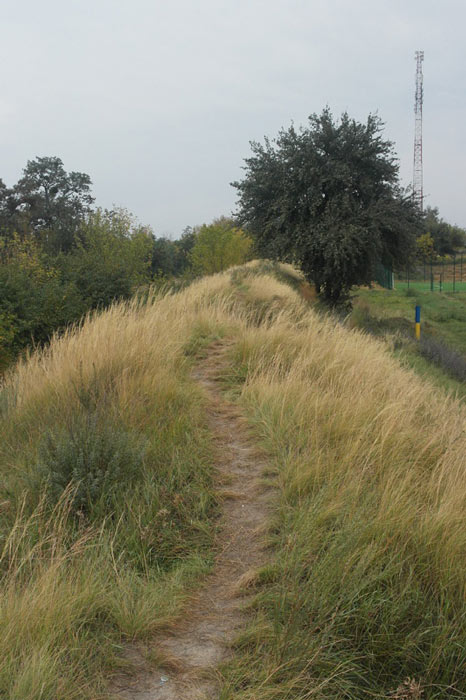
The Largest Surviving Fortress of its Era: Bilhorod Kyivskyi in the Ukraine
The ancient city-castle known as Bilhorod Kyivskyi in the Ukraine, rose to prominence in the 10th century. With the fall of the Kievan Rus in the 13th century, it then lost its importance in the area. All that is visible today are archaeological remains near a small village in the Ukraine, although they are the largest fortress remains dating back to this era.
Putting Bilhorod Kyivskyi into Context: The Kievan Rus
The so-called Kievan Rus was a medieval federation of East Slavic tribes with a unique and rich history. The Rus governed this territory from their base camp in Kiev. The modern states of Russia, Ukraine, and Belarus all have their formative roots in the history of the Kievan Rus, which meant the land of the Rus of Kiev.
- The Kievan Rus’ – When Vikings and Slavs Cooperated to Shape History
- Unique 5,000-Year-Old Tomb from Ukraine Brought to Light with Digital Reconstruction
The city-castle of Bilhorod Kyivskyi first appears in the historical record in 980 when it was mentioned in ancient chronicles. These days, Bilhorod Kyivskyi can be found near the modern-day village of Bilohorodka, on the right hand bank of Irpin River in the Ukraine. This was once the land of Drevlyans, a Slavic tribe which opposed being included into the Kievan Rus and who historically resisted the princes of Kiev.

Monument to Vladimir I of Kiev, the founder of Bilhorod Kyivskyi in the Ukraine. (Visem / CC BY-SA 3.0)
The Founding of Bilhorod Kyivskyi
Vladimir I of Kiev, the ruler of the Kievan Rus’ between 980 to 1015, who was known as Vladimir the Great, built a castle at Bilhorod Kyivskyi in 991, after which it became his preferred residence. Historians argue that building a castle here could have been an attempt to enforce power over the Drevlyans, while also protecting Kiev from attack from the fierce nomads of the Great Steppe.
In 997 the city-castle of Bilhorod Kyivskyi famously resisted against the Pechenegs, a nomadic people from Central Asia, during a long and terrible siege. The ancient Slavic chronicle known as Rus’ Primary Chronicle recorded that during the siege the residents of Bilhorod Kyivskyi took part in a veche, a kind of assembly which occurred in Slavic countries, in order to decide whether or not to surrender to the Pechenegs.
One of the benefits of Bilhorod Kyivskyi was its location near to the city of Kiev in the Ukraine. Bilhorod Kyivskyi became a bishop seat in the 11th century, and then later, in the 12th century it became the seat of the heir of the Grand Duke of Kiev. This tradition was started by Volodymr Monomakh when he moved his son Mstislav I of Kiev to Bilhorod from 1117, allowing him the opportunity to keep his son close by. The city later became the capital of the Kievan Rus under Rurik Rostislavich.

Ramparts of the ancient castle-city of Bilhorod Kyivskyi in the Ukraine. (Kiyanka / CC BY-SA 4.0)
The Demise of the Kievan Rus
The city came to its demise when the Moguls invaded the Kievan Rus in the 13th century, and after their destruction of Kiev. Between around 1237 and 1242, the Monguls took over, and the Kievan Rus was broken into pieces which over time became the modern nations of the Ukraine, Belarus and Russia.
Now all that remains are ruins located near a small Ukranian village named Bilohorodka. This archaeological site covers 110 hectares (approx. 270 acres). These are the only surviving remains of a Drevlian fortress as well as the biggest surviving fortress from this era.
- Cossack-Sorcerers: The Secretive and Magical Warrior Society of Ukraine
- Ukrainian Burial Mound Dig Reveals 5,500-Year-Old Stonehenge-like Structure
According to the Internet Encyclopedia of Ukraine, the ruins at Bilhorod Kyivskyi were first excavated by Vikentii Khvoika, a Ukrainian archaeologist of Czech origin, between 1909 and 1910. During these archaeological explorations, they uncovered the remains of dwellings, fortifications, church foundations, workshops, tools, and other objects. More recent excavations have unearthed thousands of artifacts, under the auspices of the Bilhorod Archaeological Expedition, arranged by the Institute of Archaeology at the Ukrainian Academy of Sciences.
Visiting Bilhorod Kyivskyi, Ukraine
Bilhorod Kyivski is about 20km east of the center of Kyiv along the R04 highway just past Bilohorodka village. You can get there using public transport from Kyiv.
Top image: Remains of the castle at Bilhorod Kyivskyi in the Ukraine. Source: Kiyanka / CC BY-SA 4.0
By Ancient Origins















